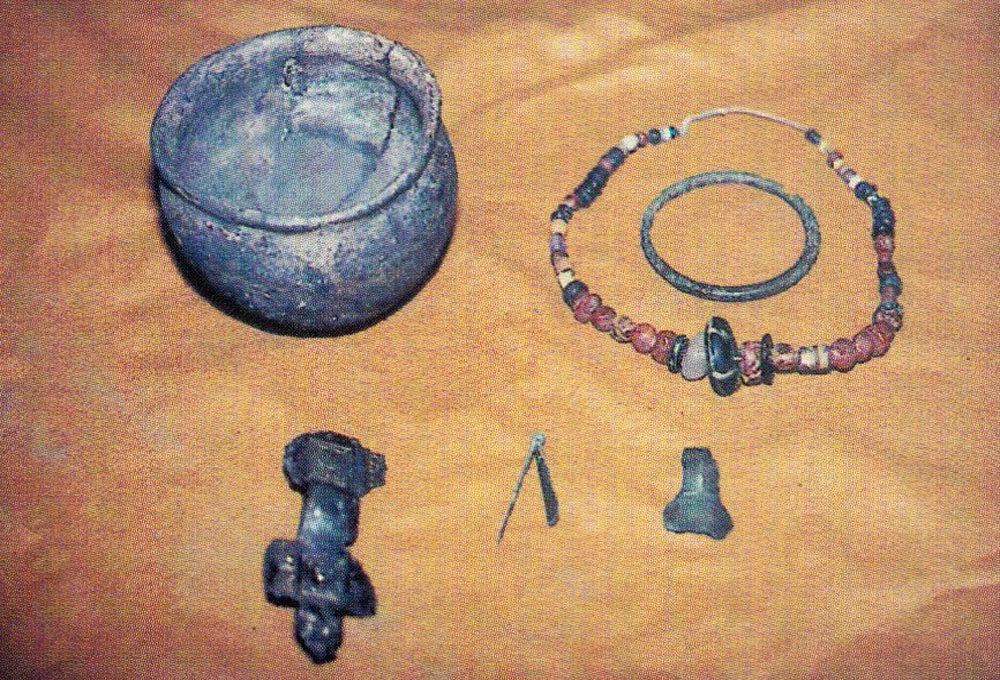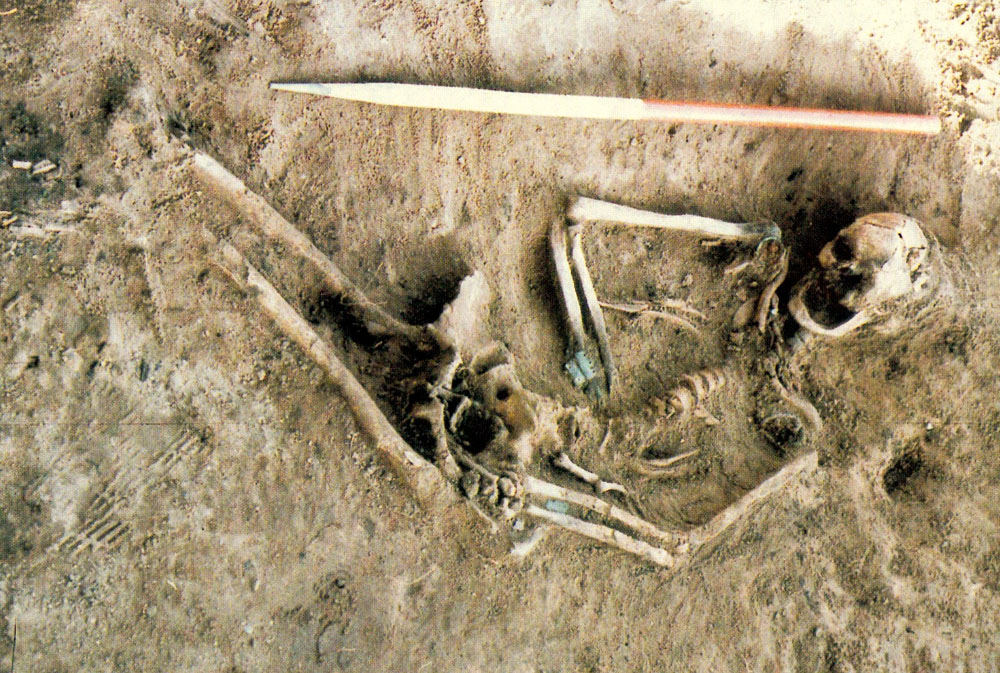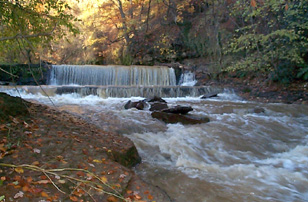400
ANGLO-SAXON INVASION – The Roman fort on Huntcliff was just one of a string down the East coast of present day England, indicating that for some time attacks had been made from across the North Sea.
About this time Roman forces were withdrawn as Britain and other parts of the Roman Empire were invaded by peoples from Northern Europe.
Over the next century people from the coastland of Denmark, Germany, Frisia and the lower Rhine came in search of new land and settled in England.
These invaders were known as the Anglo-Saxons.
To what extent they absorbed, displaced or enslaved the Celtic and Roman people is not known.
Their language merged to form Old English.
During the 6th century separate kingdoms developed as they fought each other for power and land.
The Anglo-Saxon folk were illiterate and no reliable records exist as to exactly when and how they took over the land, which is called after them.
The Venerable Bede wrote in 731:-
“from the country of the Angles …which is called Angulus, came ..all the Northumbrian race [that is those people who dwell north of the river Humber]”


ANGLO-SAXON CEMETERY.
The earliest evidence of Anglo-Saxons in this area is the cemetery found at Hob Hill.
It is one of the most northerly of Anglo-Saxon burial sites in England and contained mixed inhumations and cremations.
It is presumed the people buried there were outlying settlers of the Anglo Saxon region called Deira and spent their lives in the Skelton area, possibly using Skelton beck as a water supply.
The 49 burials, laid out in rows, contained articles, which date the site to the 5th/6th centuries.
One body was buried in animal hide and another in a coffin.
The dead were buried with their jewellery.
Beads of jet, amber, glass and paste were found along with brooches and buckles that fastened their clothing.
Men were buried with their weapons; a throwing axe, knives and a spear ferrule were excavated.
A pair of bronze tweezers were also found.
Lecture at Saltburn 13th March 1911 by the Rev G J Lane, F.G.S. to the Cleveland Naturalists Field Club.:-
The most interesting part of Mr Lane’s lecture was his account of the Anglo Saxon Cemetery discovered at Hob Hill.
Anglo-Saxon settlements in the District were still traceable in the names of Brotton, Skelton, Kilton, Upleatham etc and he thought that the cemetery at Hob Hill had been a district cemetery, for the remains of over 100 burial urns had been discovered.
These urns were found in long parallel rows about 2 feet below the surface and were invariably broken and in which the ashes of the dead had been placed after cremation.
Hundreds of jet, amber and glass beads had been found, as well as human teeth, a fine iron Saxon axe, knives, parts of spears and several fibulae or bronze brooches. One of the latter was the square-headed variety and had been pronounced by the British Museum authorities to be one of the finest that had been found in Britain.
At present these interesting antiquities may be seen in the reading room of the New Marske Institute.”

In 2008 the local Archaeologist, Dr Stephen Sherlock, discovered another Anglo-Saxon burial ground on the coast near Loftus, about 3 miles as the crow flies from the one at Saltburn.
Rich jewellery has been found in the grave of a female, who experts think may have been someone of Royal status.
500
By this time the Anglo Saxon culture had become dominant and much of England was divided between several kingdoms, vying with each other for power.
The Skelton area lay between Bernicia to the north and Deira to the south.

550
Ida the Flamebearer, king of Bernicia, conquered the area South of the Tees.
604
NORTHUMBRIA – Athelfrith, the new king of Bernicia, married the daughter of the king of Diera and the area between the Tyne and the Humber was united as Northumbria.
635
CHRISTIANITY.
Oswald, king of Northumbria, defeated Penda of Mercia, and assumed the title of “bretwalda”, overking of England.
Oswald accepted Christianity which was spread to this area from the north by the Celtic monks of Iona and from the South by Roman missionaries.
Monasteries were built in the north east, Lindisfarne and Jarrow, and eventually local churches.
There was an Anglo/Viking church at Skelton, but exactly when it was built is unknown.

The Churchyard, is not of the usual rectangular outline, but retains the pear-shape that is considered to be indicative of very early Christian sites and, in this respect, matches others found elsewhere in Britain.
A portion of stone tablet, assumed to be part of a sun dial from this building, was unearthed in the old churchyard and is now kept at All Saints Church in the High St.
The small portion of text has never been translated.
See next page.
663
The Synod of Whitby decided the church would follow the Roman way of Christianity rather than the Celtic.
800
Up to this time Skelton was part of the kingdom of Northumbria.
The history of that kingdom and that of England is a confusion of infighting.
“Three Northumbrian kings were murdered, five were deposed and two retired to become monks”.


Next Page Skelton’s Rosetta Stone.
Previous Page 10,000BC TO 410AD
Contents Page